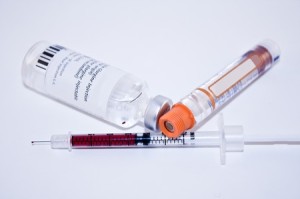 Diabetes is like a Pandora’s Box: once diagnosed, it unleashes a torrent of potential problems. From diminishing oral health and circulation problems to nerve pain, diabetes can wreak havoc on the body. Now a new study offers more gloomy news to those with diabetes, particularly men and women who developed diabetes as a young adult. According to the research, the threat of diabetes-related cardiovascular disease becomes even more common in adults who have had diabetes since young adulthood.
Diabetes is like a Pandora’s Box: once diagnosed, it unleashes a torrent of potential problems. From diminishing oral health and circulation problems to nerve pain, diabetes can wreak havoc on the body. Now a new study offers more gloomy news to those with diabetes, particularly men and women who developed diabetes as a young adult. According to the research, the threat of diabetes-related cardiovascular disease becomes even more common in adults who have had diabetes since young adulthood.
Background Information About Diabetes
The World Health Organization estimates that one in 10 adults around the globe have diabetes, with most cases categorized as type 2 diabetes. This means that the body can’t make or process enough insulin, the critical hormone that helps the body transform sugar into energy. Type 2 diabetes is correlated to obesity and aging, since both phenomenons prevent the body from functioning smoothly.
The good news about diabetes is that it’s a manageable disease. In fact, lifestyle changes and medications help keep symptoms almost entirely in check, and there are plenty of diabetes patients who turned their lives around with exercise and healthy living and earned freedom from medication entirely. However, untreated diabetes can have dangerous results like blindness, kidney failure, and stroke.
Why Diabetes Hurts the Heart, Too
This recent study examined data on more than 3,000 adults over the age of 25. Researchers concluded that participants who had lived the most years with diabetes were far more prone to heart damage than their peers who had only recently developed diabetes. As the lead study author, Dr. Kishi, explained, “Cumulative exposure to diabetes and higher insulin resistance from early adulthood to middle age are risk factors for adverse cardiac dysfunction later in life.”
Diabetes patients should take this research as a critical reminder to properly control blood sugar and remain attentive to their health in order to minimize their own risks of cardiovascular disease.

 Patient Login
Patient Login